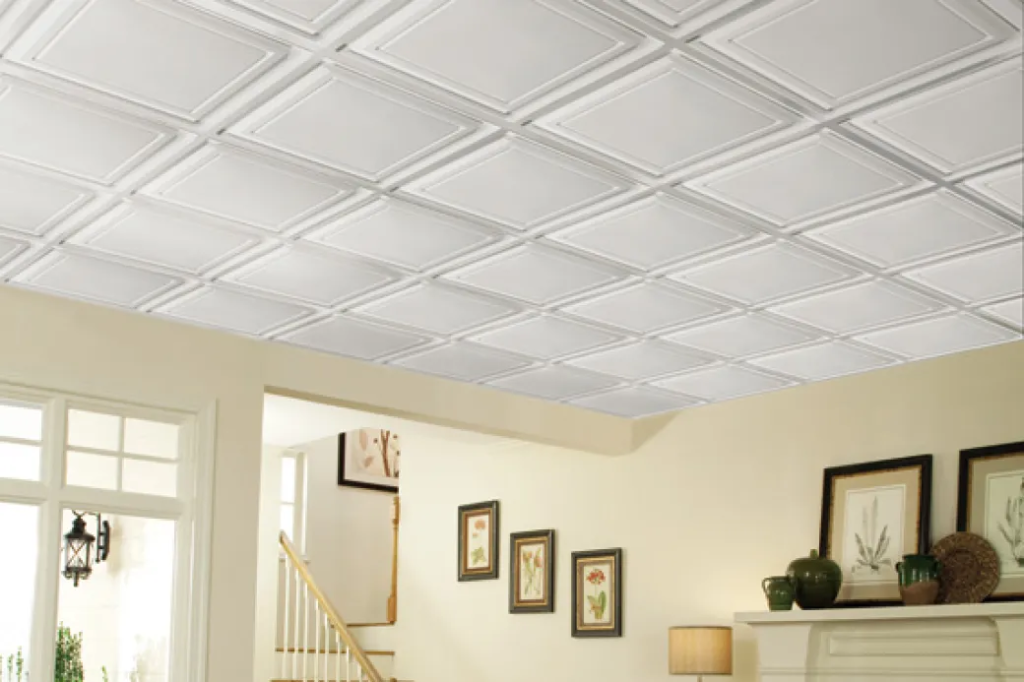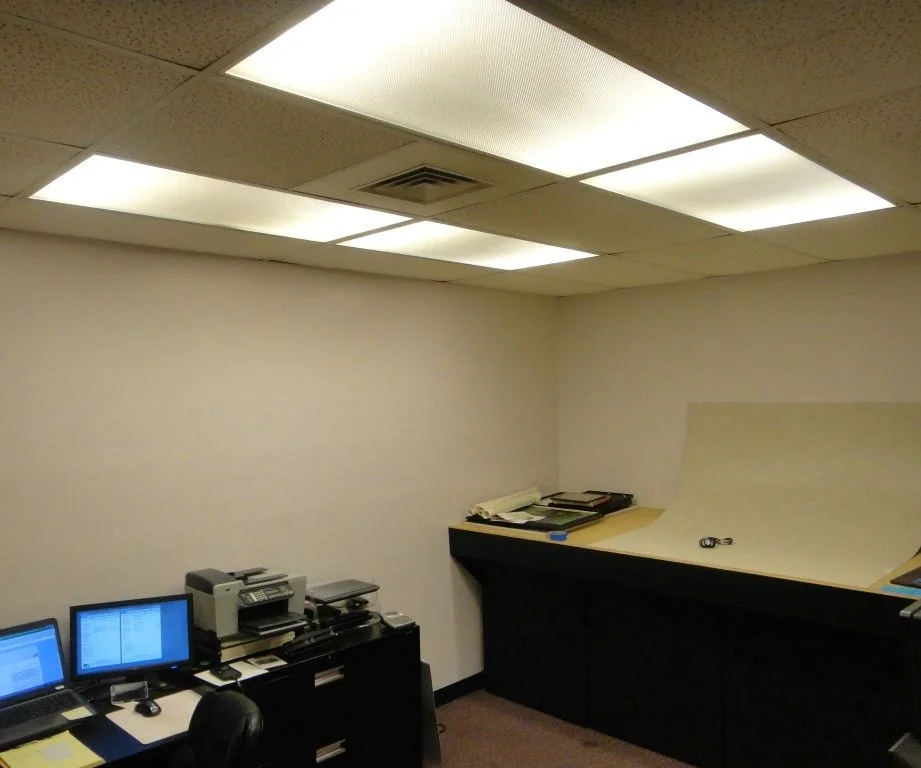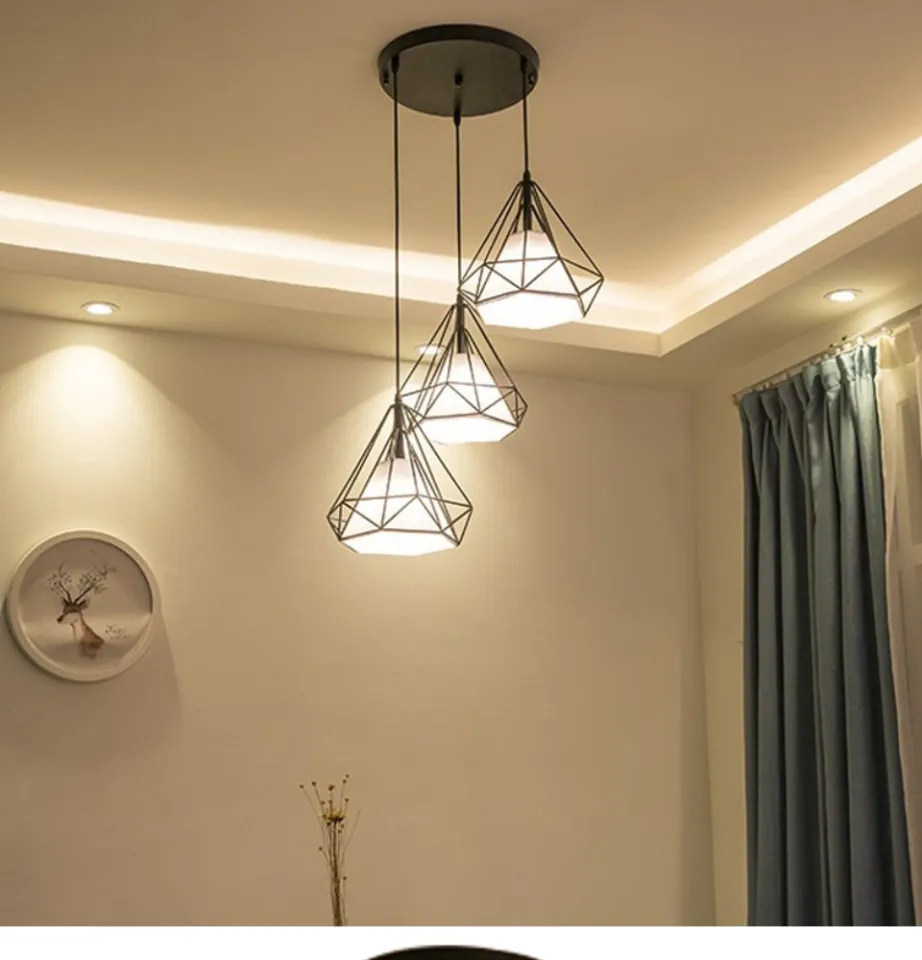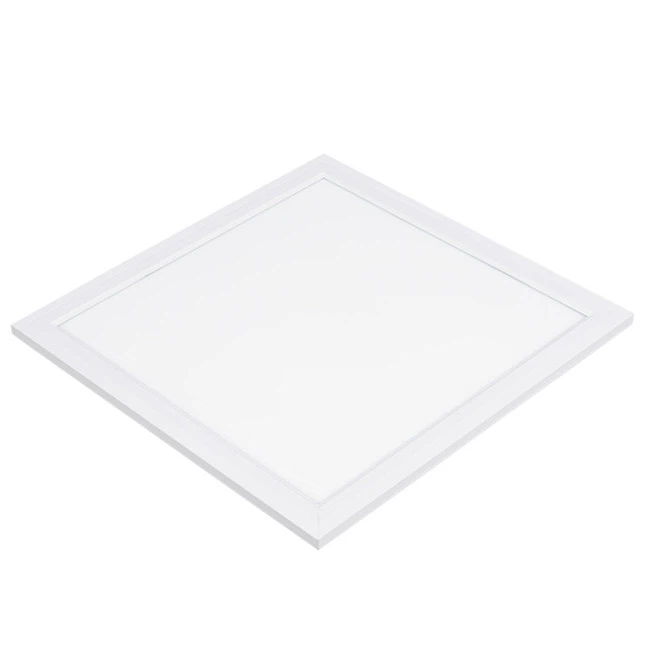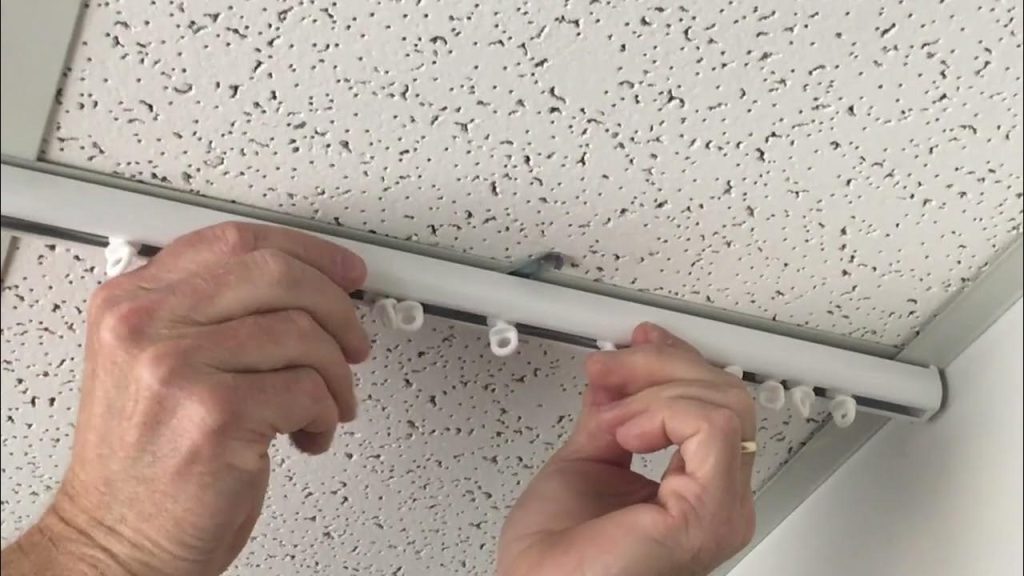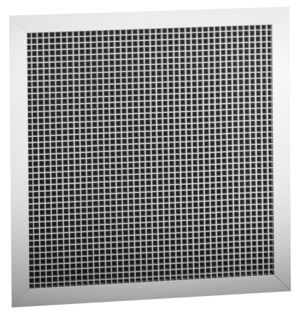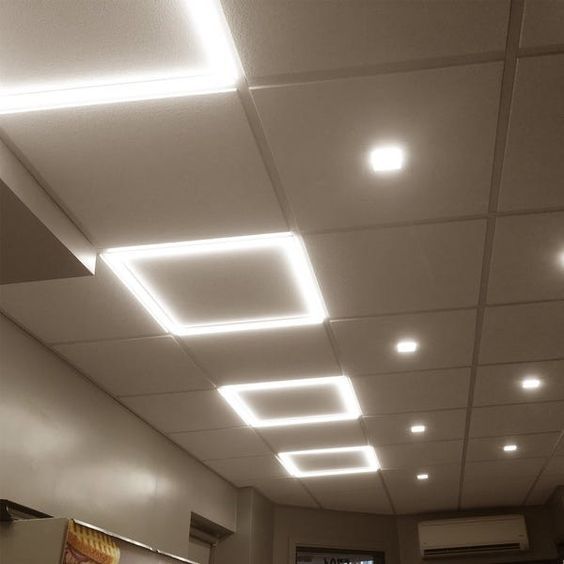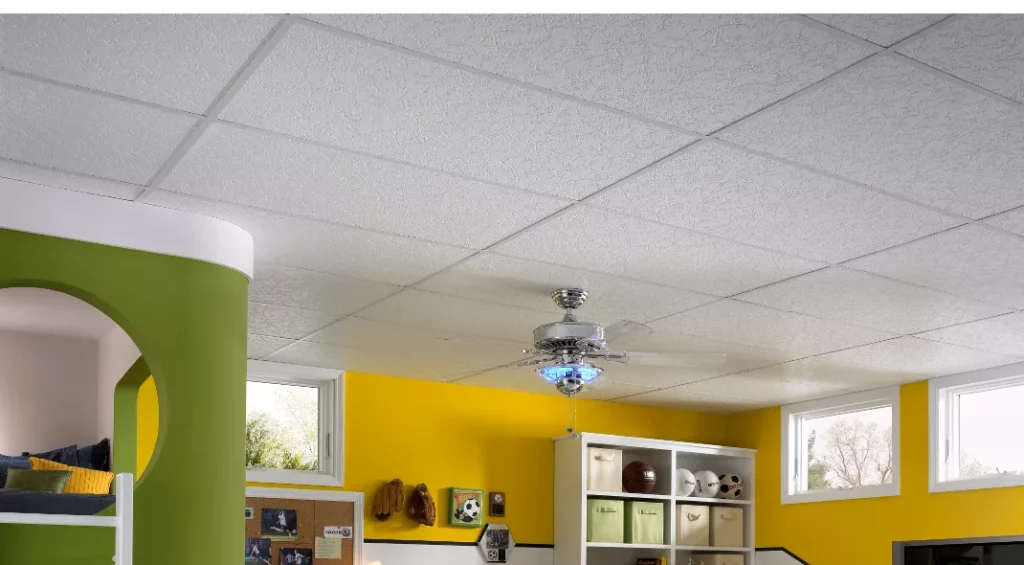When it comes to installing ceiling fans in spaces with drop ceilings, using the right Ceiling Fan Box for Drop Ceiling is essential for ensuring both safety and functionality. A drop ceiling, commonly found in commercial buildings, basements, or even some residential areas, presents unique challenges that require specialized fixtures to secure a ceiling fan properly.

In this article, we will explore everything you need to know about Ceiling Fan Boxes for Drop Ceilings, including what they are, why they’re important, how to choose the right one, and how to install it. Whether you’re a DIY enthusiast or a professional looking for reliable advice, this guide will help you make informed decisions and ensure your ceiling fan is installed securely and effectively.
Read too: Discovering the Charm of Nautical Outdoor Ceiling Fans for Your Coastal Retreat: Sail into Style
What Is a Ceiling Fan Box for Drop Ceiling?
A Ceiling Fan Box for Drop Ceiling is a specific type of electrical box designed to support the weight and movement of a ceiling fan in spaces with a suspended or grid-style ceiling. Drop ceilings, also known as suspended ceilings, are commonly used in office buildings, basements, and some residential spaces. These ceilings consist of tiles or panels that are suspended from a metal grid system.
Unlike traditional ceilings, where support structures are solid and capable of holding heavy fixtures, a drop ceiling requires specialized boxes that provide the necessary support for a ceiling fan. A Ceiling Fan Box for Drop Ceiling is engineered to anchor the fan securely to the ceiling grid, ensuring that the fan remains stable and safe for use.
Why You Need a Ceiling Fan Box for Drop Ceiling
Installing a ceiling fan in a drop ceiling without the proper fan box can result in several issues:
- Lack of Stability: Standard ceiling boxes are not designed to support the weight and movement of a ceiling fan. Using the wrong box can cause the fan to wobble, become unstable, or even detach from the ceiling.
- Safety Hazards: An improperly installed ceiling fan can be a serious safety risk. If the fan isn’t securely anchored, it could fall, potentially causing damage to property or injury to people in the room.
- Electrical Issues: Ceiling fan boxes also house electrical connections. Using an inadequate box can result in faulty wiring, short circuits, or other electrical problems that could lead to fire hazards or damage to your ceiling fan motor.
- Code Compliance: Electrical codes often require specific boxes for ceiling fans, especially in non-standard ceiling types like drop ceilings. Using a ceiling fan box for a drop ceiling ensures your installation complies with safety regulations.
Key Features of a Ceiling Fan Box for Drop Ceiling
When selecting a Ceiling Fan Box for Drop Ceiling, there are several factors to consider to ensure that the box can provide the necessary support and functionality. Here are the most important features to keep in mind:
1. Weight Capacity
Ceiling fan boxes for drop ceilings must be able to support the weight of the fan, which can range from a few pounds to over 50 pounds, depending on the model. Look for a fan box that is rated for ceiling fan use, as these are designed to handle the added weight and vibration of a fan.
2. Compatibility with Grid Systems
Drop ceilings are suspended by a grid of metal channels. The fan box must be compatible with this grid system to ensure it can be properly mounted. Some fan boxes for drop ceilings come with brackets or adapters to fit into the metal grid and anchor securely.
3. Secure Mounting Mechanism
Ensure the fan box comes with a secure mounting system that prevents it from shifting or loosening over time. A box with strong mounting brackets and a solid anchor will provide the necessary stability for the ceiling fan.
4. Size and Shape
Ceiling fan boxes for drop ceilings come in different shapes and sizes, depending on the design of your grid system and the size of your ceiling fan. Make sure the box is large enough to accommodate both the fan and its wiring, while also fitting within the constraints of your drop ceiling tiles.
5. Electrical Wiring Access
The fan box must also provide easy access to the electrical wiring for the installation of the ceiling fan. This typically includes knockouts or entry points for the wires to pass through. Ensure that the box has sufficient space to safely house the wiring connections.
Types of Ceiling Fan Boxes for Drop Ceiling
There are different types of Ceiling Fan Boxes for Drop Ceilings available on the market, each designed for specific installation needs. Let’s take a look at the most common types:
1. Standard Fan Mounting Boxes
These are the most common type of ceiling fan boxes and are typically used for basic ceiling fan installations. They provide the necessary support and are designed to fit most drop ceiling grid systems. Standard fan boxes are simple and easy to install but may not be suitable for very heavy fans or more complex installations.
2. Heavy-Duty Ceiling Fan Boxes
If you are installing a larger or heavier ceiling fan, you may need a heavy-duty fan box. These boxes are designed to support fans that weigh more and require additional stability. Heavy-duty ceiling fan boxes are typically made of metal and have reinforced mounting brackets for added strength.
3. Junction Boxes with Support Brackets
These boxes have built-in support brackets that make them ideal for drop ceiling installations. The brackets are designed to attach securely to the ceiling grid, allowing for easy mounting of the fan box. Junction boxes with support brackets provide enhanced security for fans that will be used in high-traffic areas or for larger, more powerful fans.
4. Tilted Mounting Boxes
Some drop ceilings have tilted or sloped surfaces. Tilted ceiling fan boxes are designed to accommodate these angled ceilings. They allow you to mount the ceiling fan at the correct angle, ensuring that the fan operates efficiently and provides optimal airflow.
How to Choose the Right Ceiling Fan Box for Drop Ceiling
Selecting the correct Ceiling Fan Box for Drop Ceiling depends on several factors, including the type of fan, the size of the room, and the specific characteristics of your drop ceiling. Here are a few tips to guide your decision:
1. Determine the Weight and Size of the Ceiling Fan
The first step in selecting a fan box is determining the weight and size of your ceiling fan. Larger fans with heavier motors will require a more robust fan box, so be sure to choose a box that can support the weight.
2. Check the Drop Ceiling Grid System
Examine the grid system of your drop ceiling to determine the type of box you need. Some ceiling fan boxes are designed to fit directly into the grid, while others may require additional mounting brackets or support.
3. Consider the Ceiling Height
The height of your ceiling may affect the type of mounting box you choose. For higher ceilings, you may need a box with additional support or a downrod extension to ensure the fan is properly installed at the correct height.
4. Look for UL Listing
Ensure that the fan box is UL-listed for ceiling fan use. This certification ensures that the box meets safety standards and is suitable for supporting a ceiling fan.
Installation Tips
Installing a Ceiling Fan Box for Drop Ceiling can be a straightforward DIY project if you have the right tools and knowledge. However, it’s important to follow proper safety procedures and make sure that the box is securely installed to avoid potential hazards. Below are the general steps for installation:
1. Turn Off Power
Before starting the installation, make sure to turn off the power to the room at the circuit breaker to avoid electrical shock.
2. Remove Ceiling Tiles
Remove the drop ceiling tiles where you intend to install the fan box. This will give you access to the metal grid system.
3. Install the Mounting Brackets
Attach the mounting brackets or support arms of the fan box to the ceiling grid system. Ensure that the box is level and securely fastened.
4. Mount the Fan Box
Once the mounting brackets are in place, mount the fan box onto the support system. Ensure that the box is aligned with the grid and is secure before proceeding.
5. Connect Wiring
Connect the electrical wiring to the fan box according to the manufacturer’s instructions. If you are unsure about wiring, consult an electrician for assistance.
6. Attach the Ceiling Fan
Finally, attach the ceiling fan to the fan box according to the fan’s installation instructions. Make sure the fan is firmly mounted and operates smoothly.
Conclusion
Choosing the right Ceiling Fan Box for Drop Ceiling is critical to ensuring a safe and stable ceiling fan installation. By understanding the key features of fan boxes, the different types available, and the installation process, you can make an informed decision and enjoy the comfort and style of a ceiling fan in your drop-ceiling space. Remember, always prioritize safety and stability when selecting and installing a ceiling fan box to ensure a long-lasting and functional fan setup.
